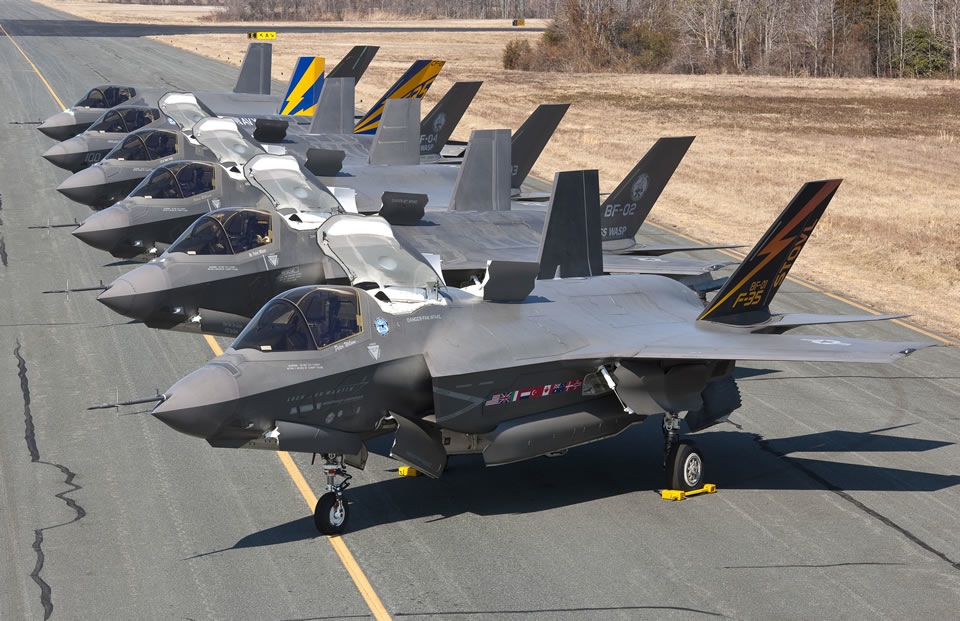
WASHINGTON: The likely Secretary of the Air Force today suggested that continuing to buy more F-35s is the best way to keep overall program costs down.
“The key to keeping the cost down in an air fleet is getting the numbers up,” Frank Kendall told the Senate Armed Services Committee. “There’s a very strong correlation between the size of the fleet and the cost to sustain that fleet. So, if there were one thing that I think will drive costs down overall, it’s continue to buy.”
Kendall’s comments come as the Pentagon and Air Force are studying how many F-35s to buy, as the Biden administration tries to modernize across the services in the face of rapid Chinese military modernization, and flat defense budgets at home.
There have been rumblings for some time that the department might lower the total F-35 requirement below current plans for 2,443 aircraft across the Air Force, Navy and Marines Air Force as costs to build and sustain the fleet are already straining budgets.
“I know there’s an issue with the total number that’s been on the table for some years, what the requirement is,” Kendall acknowledged. “What we should really be working on most is getting the cost down and keeping the procurement at a rate that makes sense.”
While the Pentagon may be reconsidering the size of the F-35 fleet, it’s not at all clear if Congress would support fewer planes.
SASC Ranking Member Sen. Jim Inhofe said during the hearing that the year 2025 is “when our combatant commanders tell us the Chinese will have more fifth-generation stealth fighters on the frontline than we do. Our days of airpower dominance are long gone. We’ve got a lot of work to do.”
While he wouldn’t acknowledge what the procurement rate might be, Acting Pentagon acquisition chief Stacy Cummings told senators last month that the Pentagon is looking at “modernizing” the F-35s it already has, as opposed to ramping up its scheduled buys of new planes.
“The department currently prioritizes modernization over accelerating production and delivering an aircraft that maintains dominance across its service life has always been the focus of the program,” Cummings said.
The huge cost of sustaining the fleet has been weighing heavily on military leaders.
“I see cost as the program’s greatest enemy,” Lt. Gen. Eric Fick, F-35 program manager, at the McAleese and Associates annual conference earlier this month. “I see high costs as an existential threat to the F-35 as an enterprise.” To be clear, he was not talking about the so-called fly-away cost, the cost per aircraft. He was talking about the overall costs of the program.
Some of those costs are associated with the problematic Technology Refresh 3, which is holding up the move to Block 4 capabilities like software upgrades. “Now we have a cost overrun and we’ve got some schedule slips on TR3,” Fick said. “As a result of the cost overrun driven by TR3, we’ve had to slow development and, in some cases, stopped development on some of those Block 4 capabilities.”
A recent Government Accountability Office report found that estimated sustainment cost estimates have remained above an estimated $1.1 trillion over the plane’s estimated 66-year lifecycle. “The services,” the GAO said, “will collectively be confronted with tens of billions of dollars in sustainment costs that they project as unaffordable during the program.”
Kendall supported the program overall, saying “the F-35 is the best tactical aircraft of its type in the world and will be so for quite some time. It’s a complex, expensive weapon, unfortunately, but it is a dominant weapon when it goes up against earlier-generation aircraft.”
That support was tempered somewhat by his call for an “affordable mix” of 4th and 5th generation aircraft going into the future “that meets our needs as driven by the National Defense Strategy — that’s what should guide those investments.”
In a ‘world first,’ DARPA project demonstrates AI dogfighting in real jet
“The potential for machine learning in aviation, whether military or civil, is enormous,” said Air Force Col. James Valpiani. “And these fundamental questions of how do we do it, how do we do it safely, how do we train them, are the questions that we are trying to get after.”


























